In the 90s, Squaresoft brought together some of the industry’s most talented individuals to create a “dream team” with the goal of creating one of the greatest RPGs of all time. That development team included all-stars like Final Fantasy creator Hironobu Sakaguchi, Dragon Quest creator Yuji Horii, and Dragon Ball author and character designer Akira Toriyama among others. This meeting of minds gave rise to Chrono Trigger, one of the best games of its generation and one of the most celebrated games of all time.
Now, Square Enix finds itself in a similar situation with Final Fantasy XVI. Producer Naoki Yoshida has even referred to XVI’s development team as a dream team himself in pre-release interviews, and they’ve got the credentials to back it up. Of course, Yoshida helms the critically-acclaimed MMO Final Fantasy XIV and plenty of those MMO devs have followed him into XVI’s development, but there are also the likes of Ryota Suzuki, the game’s combat director who worked on Devil May Cry 5, Dragon’s Dogma, and Marvel vs. Capcom 2, and Masayoshi Soken, one of the industry’s most beloved composers who continually churns out bangers for Final Fantasy XIV.
If you look at any of the names attached to Final Fantasy XVI, you’ll notice a history of exceptional work. That talent bleeds into every aspect of this game. As many of you already know from the game’s recently released demo, Final Fantasy XVI fires on all cylinders right out of the gate. As exciting as the demo is, however, things only ramp up from there. Final Fantasy XVI is an exhilarating adventure packed with plenty of pretty particle effects and larger-than-life Eikon battles interspersed between quiet, human moments of heartbreak, hatred, and most importantly of all, hope.
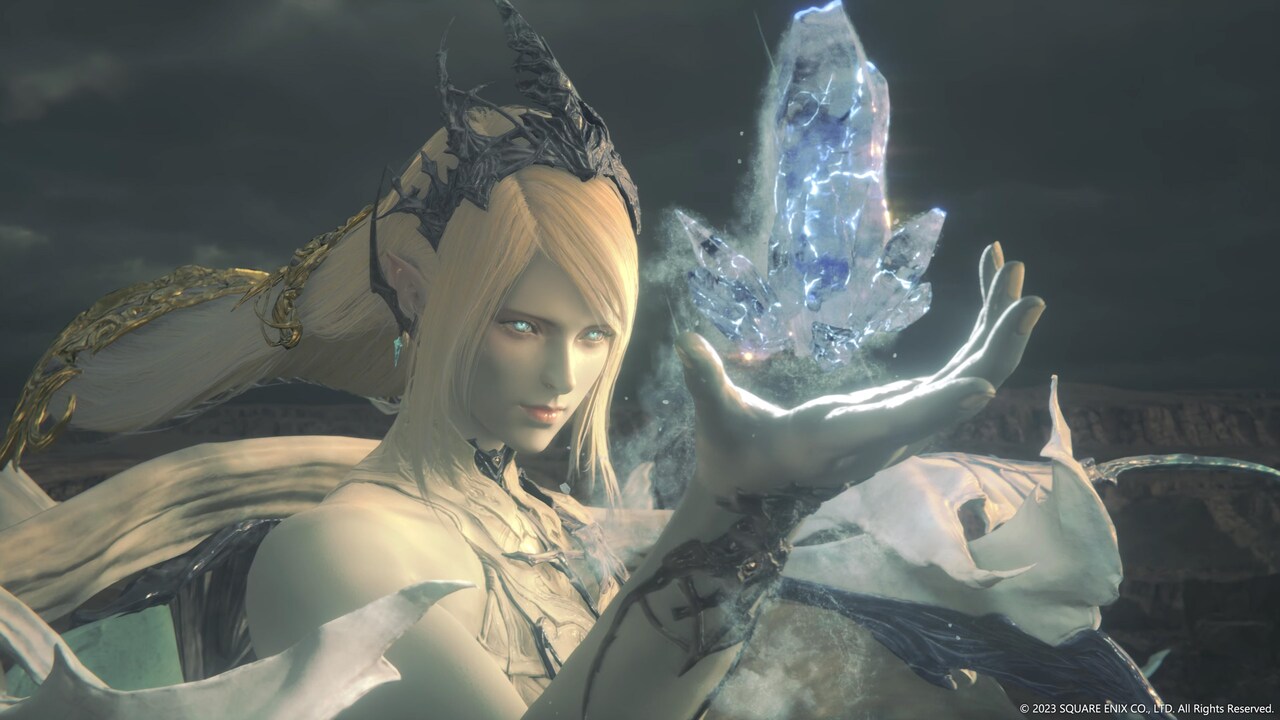
Welcome to Valisthea
Final Fantasy XVI is set in Valisthea, a dark fantasy world comprised of twin continents that rely on Mothercrystals as the backbone of society. These Mothercrystals, and smaller handheld crystals owned by commoners and elites alike, allow people to cast magic to aid with daily tasks like refilling wells, chilling food, and heating baths. There are some with the ability to cast magic without a crystal, but these people are immediately branded and forced into slavery as Bearers. In addition, a select chosen few are Dominants, powerful individuals with the ability to call upon the power of an Eikon.

Bearers, named for the Crystal’s Curse that they bear which slowly turns their bodies to stone as they continue to cast magic, are seen as subhuman in each of Valisthea’s kingdoms. It’s these Bearers that are the backbone of Final Fantasy XVI’s story, as protagonist Clive Rosfield finds himself embroiled in an underground rebellion amid his personal quest for revenge. XVI’s story continually puts new twists on its rules as Clive and his companions travel the Twins, and learning the intricacies of the relationships between Bearers, the Mothercrystals, Dominants, commoners, and the elite in each kingdom keeps the story interesting throughout its lengthy runtime.

Bearers of the Crystals’ Curse
XVI wrestles with the very real consequences of revolution, forcing its cast to confront the suffering that always precedes salvation. A major running theme throughout the game is that things will get worse before they get better. Clive’s actions are hurting people and making the lives of common folk that much more difficult in the short term. It’s equal parts heart-wrenching and inspiring to see Clive and his band of Cursebreakers rally people to their cause knowing that they’ll most likely lose their friends, family, and homes and not even see the fruits of their labors within their lifetime — and that’s if they even decide to hear Clive out in the first place.
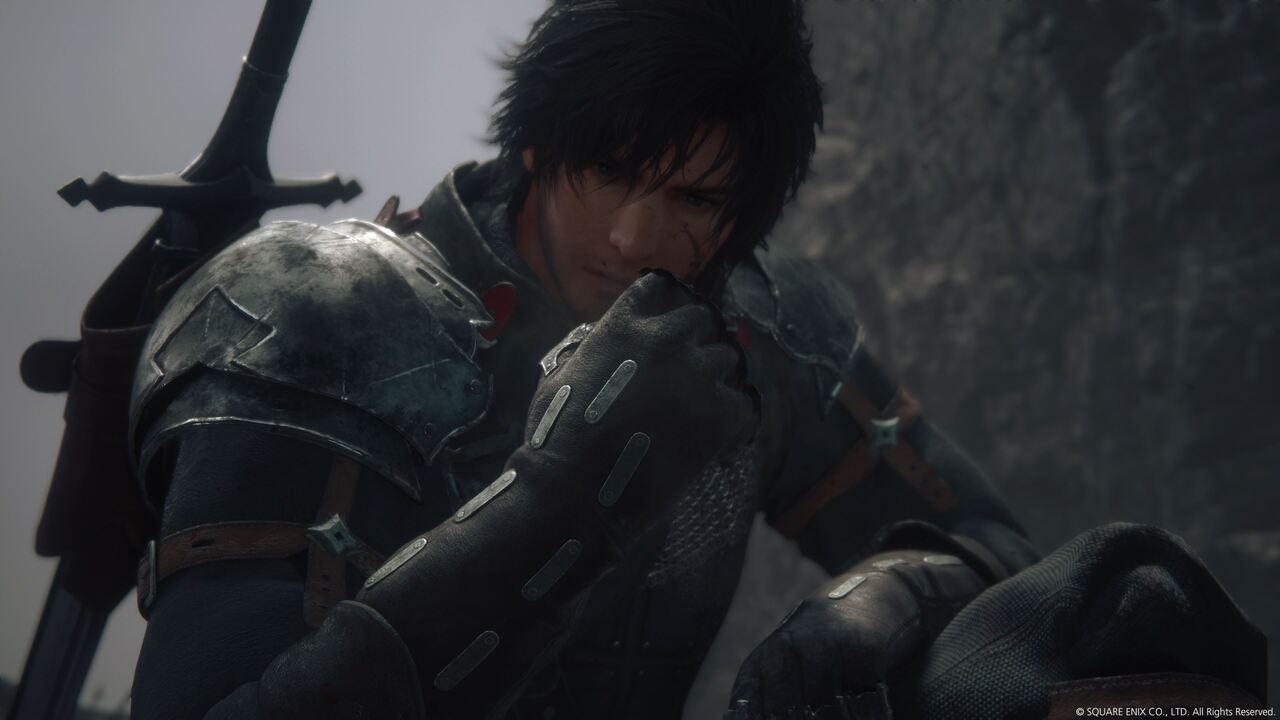
Final Fantasy XVI’s side quests might as well be mandatory because they’re the best demonstration of these themes. The main story does a fine enough job, but really getting to know the people of Valisthea and their cultures will greatly enhance your experience with the game. Basically every optional quest in the game functions as a new lens of examination for Clive’s goals and morals. Pretty much every “well actually” thought that could be raised by an overly pedantic Redditor is answered in a side quest at some point.
Each of XVI’s quests is filled with smart writing that explores avenues of oppression that aren’t as obvious on the surface level but still hurt just as hard. One may be compelled to turn down their dream job to help with their sibling’s underground Bearer liberation efforts, for example, or a doctor may find themselves wracked with guilt over lost patients even if they’re doing everything they can. Loss extends beyond just dead people in Valisthea.

In addition, there are multiple side quest chains that progress alongside the main story, giving you updates on growing settlements and storylines that are central to Clive’s cause. The rewards for these might be lackluster if you’re only looking at the Gil and XP, but the lore and worldbuilding are the real rewards. Watching a settlement of newly-freed Bearers struggle to find their way, for example, is incredibly compelling. Some of them can’t even comprehend what having a home means, let alone be motivated to take up arms to defend it from monsters.
Where There’s a Chance, There’s a Choice
Still, despite its dark tone and overt Game of Thrones influence, Final Fantasy XVI is ultimately a hopeful tale. Clive’s group toils for the future of those yet to come, and XVI’s story goes to great lengths to show the importance of that. It’s a story about solidarity, about joining arms and standing side by side with your companions even if there’s only a 1% chance of a better future sometime down the line. In XVI’s eyes, complacency is cowardice.
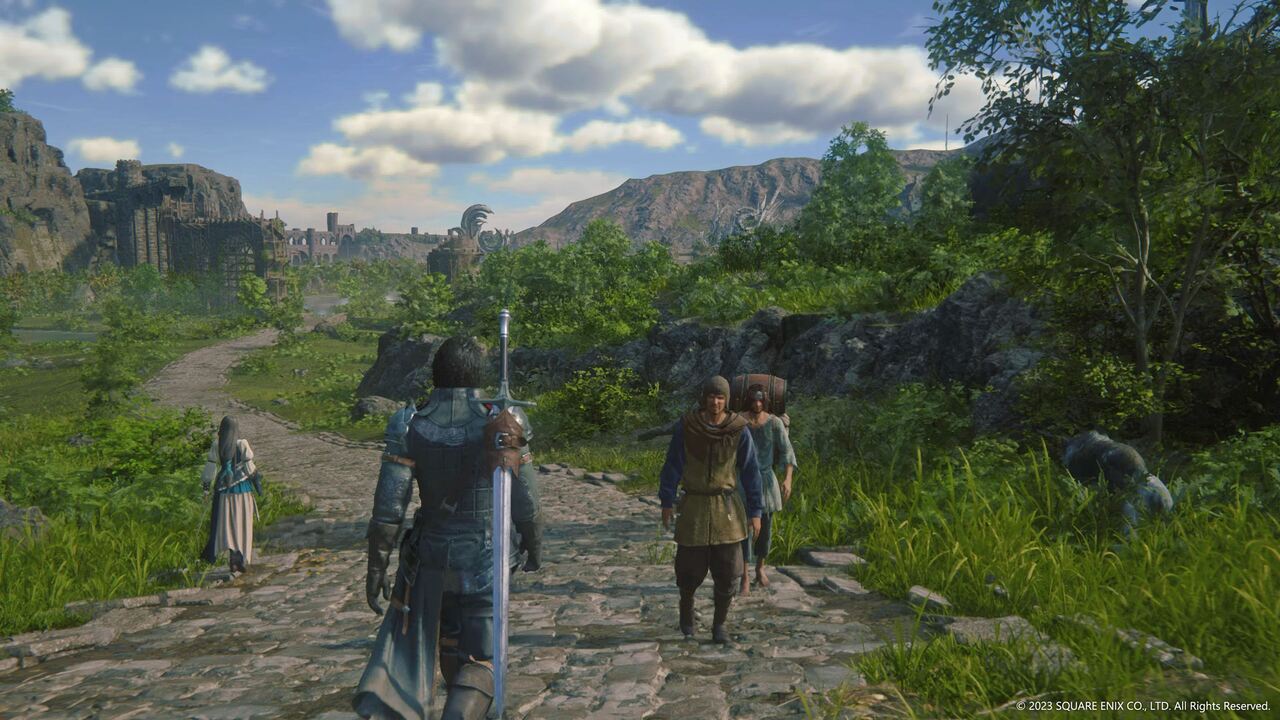
It’s an incredibly important story for our day and age as we find ourselves feeling powerless and smothered by an oppressive atmosphere. When most are too apathetic about their situation to strive for change, and those that do have the will to invoke change are too worried about putting food on the table or living paycheck to paycheck, how do we as a society advance the greater good?
XVI asserts that our neighbors and friends are the wings on which we rise, but it also shows the reality that the power of friendship is not a magic bullet that cures all. It’s a harsh path to take — and it’s okay to be afraid or even angry at the hand you’ve been dealt — but selfless sacrifice for those yet to come is the only way we can grow. Things may seem fated to remain this way, but our will is stronger. We only need to take the first steps to tread a path for the generations that follow.

Again, the game’s side quests are the most effective demonstration of the flickers of hope we can find in hopeless situations. Whether it’s tending to the garden of a lost ally, finding a tasty treat for a furry friend, or gathering a group of friends to share a bottle of vintage wine, there are always brief snippets of happiness to be found throughout Valisthea. A world without little moments like this wouldn’t be worth saving, after all.
Valisthea Historia
If it sounds like Final Fantasy XVI is a dense game, then you’d be right. It demands your attention and requires you to learn the names of various kingdoms and characters, all while keeping track of manipulation and subterfuge that muddy the waters. That’s where Active Time Lore comes in. Active Time Lore is one of the game’s breakthrough features, allowing you to press the touchpad at any time — even during cutscenes — to access a web of brief codex entries for every relevant character, location, or proper noun in that scene.

It’s much more than simply reading a long codex entry in another RPG too, since Active Time Lore usually only provides a paragraph or two maximum with the most relevant information that you need for that scene. Plus, the entries are updated with new information as you progress through the game, so as mysteries are uncovered, new refreshers will be added. It also keeps track of any ongoing mysteries or questions, so you’ll be able to tell if you’ve genuinely forgotten something or if you’re not supposed to know an answer yet.
In addition, there’s a State of the Realm menu that can be accessed at the Hideaway, the game’s main hub area. This shows an interactive timeline and map that showcases a web of every character relationship in the game, complete with helpful hints along the connective lines that read “brother,” “sister,” “manipulating,” “attempted assassination,” and things like that. The map also changes as you progress along the timeline, allowing you to see borders grow and shrink throughout the story so you can keep tabs on each kingdom on the Twins.

Active Time Lore and State of the Realm are genuinely two of Final Fantasy XVI’s most impressive features because of their ease of use and continual updates throughout the story, and I hope to see more RPGs adopt something similar in the future. Imagine if you could watch a show like Game of Thrones for the first time all over again but still have all the knowledge you know now. That’s what Active Time Lore brings to the table. It’s like having a know-it-all friend on the couch next to you, only less annoying.
Active Time Battle
Final Fantasy XVI’s world and story deserve endless praise, but for the sake of this review, we’re moving on to the game’s other pillar: combat. While it may seem simple at first glance, Clive’s powers create a remarkably deep combat system.

Clive is armed with a basic sword attack and a ranged magic attack, but the two are meant to be alternated one after the other as your main combo string. On top of that, Clive can have up to three Eikons equipped at once, each with their own unique ability and two additional special attacks that operate on cooldowns. Stringing these together is the real meat of the combat, and choosing which Eikons to equip, when to use certain abilities, and leveling up abilities so you can use them with other active Eikons is where the bulk of build crafting takes place.
Of course, the combat designer on this game also gave us Devil May Cry 5 and Dragon’s Dogma, so you know there are fancy tricks that Clive can pull off during fights. Launching enemies into the air, using jump cancels to extend combos, and pulling off riskier parries in lieu of perfect dodges represent the tip of the iceberg with XVI’s combat depth.
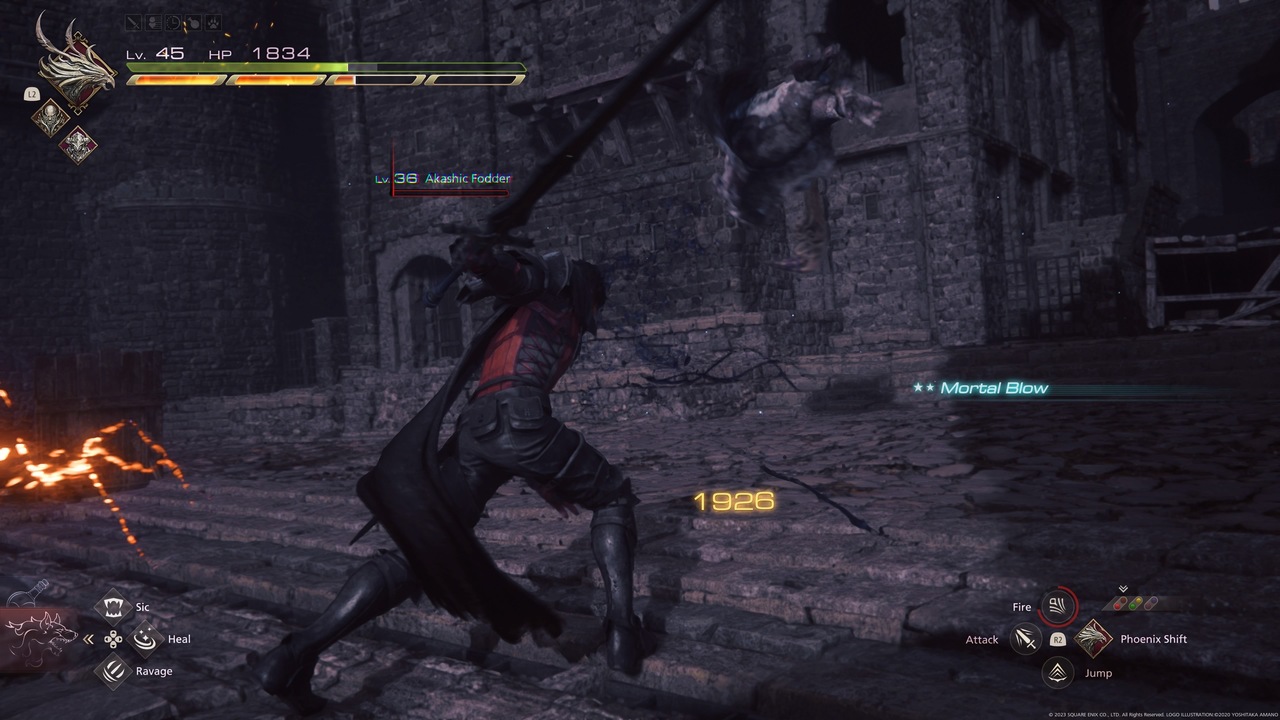
Plus, there’s Torgal, Clive’s canine companion who serves as the only other directly controllable party member in the game. Clive can issue commands to Torgal during combat to extend his combos, and this powerful pup can launch enemies sky-high, extend combos both on the ground and in the air, and even slam foes down to the ground. There’s a lot to keep track of during XVI’s battles when you factor in Clive’s rhythmic sword/magic combo, Eikon ability cooldowns, and Torgal commands, but the feeling you get when you start to master these systems is a high that few games can match.
Eikonic Conflict
Simply put, Final Fantasy XVI has some of the best boss battles in any game ever. Final Fantasy is known for its scale and spectacle, but the PlayStation 5 breathes new life into these setpieces and makes them unbelievably gorgeous.
The game somehow continues to top itself with each new boss battle, and most of these fights had my jaw on the floor and left me wondering how something like this is even playable. Soken’s sweeping score is the cherry on top, decorating the blinding flashes of particle effects and epic scale with some of the most triumphant tracks I’ve ever heard.
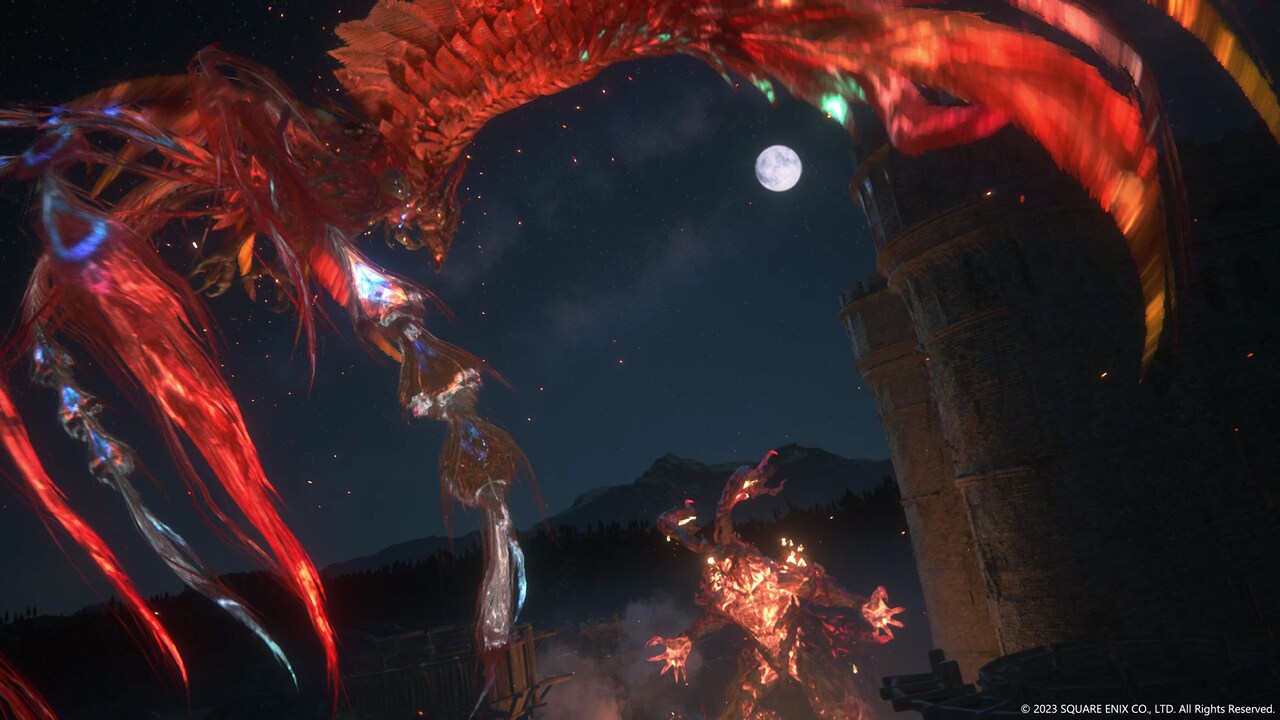
XVI’s normal combat already has an unbelievable amount of visual flair, but boss battles make use of QTEs and jaw-dropping phase transitions to really sell the spectacle. Things heat up even more in Eikon vs. Eikon fights, many of which have already been showcased in pre-release trailers. The best of the bunch haven’t been showcased yet though, and the game keeps coming up with creative new ways for these massive magical beasts to demonstrate their abilities.
Smokin’ Sexy Style
Unlike Devil May Cry, Clive isn’t scored for stylish combos or fancy strings during the main game. However, there’s something for all you DMC junkies out there: arcade mode. This side mode lets you replay any of the game’s missions with fixed gear and a scoring system, giving you a reason to flex on those goblins and an outlet to scratch that Devil Trigger itch. If you really want to stretch this combat system as far as it can go, then arcade mode is for you.

If you’re looking for something to test your mettle, then you can start a playthrough on “Final Fantasy” mode after completing the main campaign. It’s technically New Game+, but it serves as Final Fantasy XVI’s postgame. It basically ramps things up from the ending difficulty-wise but places you right at the beginning of the game (after the introduction, saving you a headache and letting you dive straight into the action).
In a game where the level design and exploration aren’t the primary focus, especially in the main campaign stages that you’ll be replaying, adding new enemies and tougher bosses basically makes them brand-new levels. Yes, it’s the same set of locales, but when most of them are basically just fancy corridors, the enemies are what make them unique. If you aren’t typically a New Game+ enjoyer, you should still give Final Fantasy mode a chance.
The Verdict
If you couldn’t tell from the heaping amount of praise I’ve been showering on it, Final Fantasy XVI is one of the best RPGs in a long time. It’s easily the best non-MMO Final Fantasy (sorry, I’m one of those XIV stans). It’s ironic that a studio as plainly named as Creative Business Unit 3 is putting out some of the most creative, passionate, and heartfelt stuff in the industry at the moment.
Final Fantasy XVI is an outstanding achievement. Every part of it, from its characters to its combat, was put there with a purpose. Not only does it deliver satisfyingly slick action RPG combat in between masterfully directed cutscenes, but also a story with real heart. Most importantly, it’s incredibly clear that a team of creative individuals was behind every decision. There’s a human element that permeates every aspect of Final Fantasy XVI, and that’s what makes it so special.


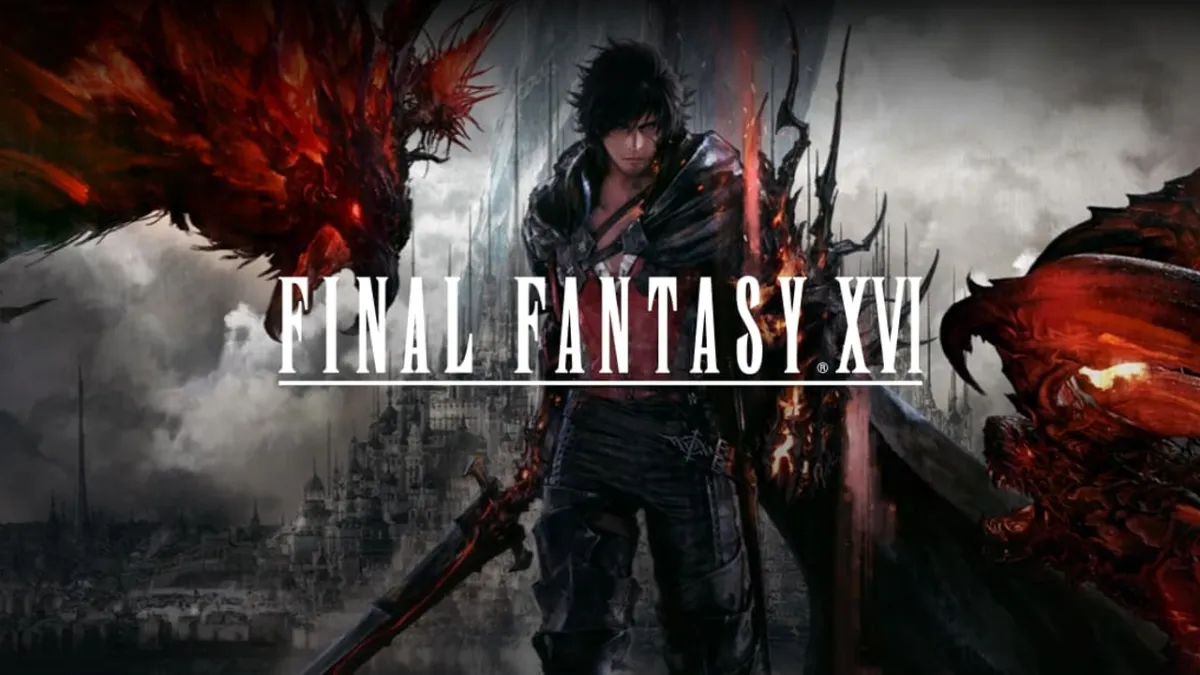









Published: Jun 21, 2023 08:59 am